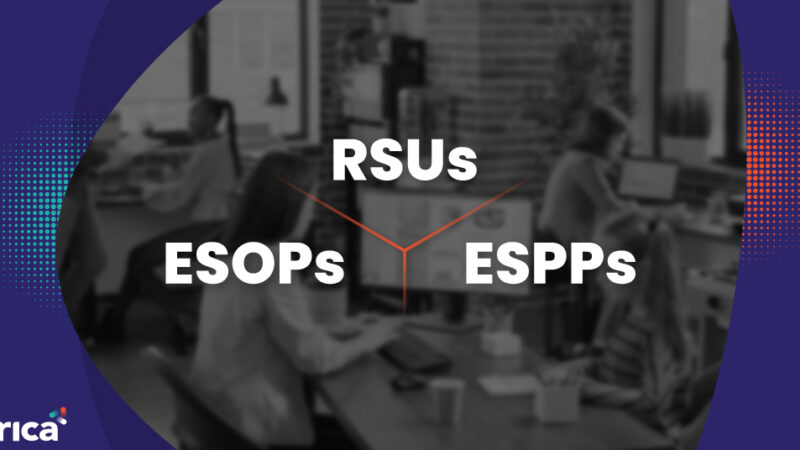
All You Need to Know About ESOP Vesting Period
The start-up ecosystem in India is the third-largest in the world and draws a wide range of global investors. In a webinar on ESOPs, the founders of trica equity and Inventus Law talk about how incorporation and initial generation of funds through equity are parts of the company’s first steps.
In conjunction with this, employee stock option plans (ESOPs) are tools to leverage equity, tap into financial and human capital, and retain talent to improve its performance and profitability.
Vesting schedules are set up by companies to determine when talented employees become fully “vested,” or acquire full ownership of certain assets, mostly stock options. The vesting period is the length of time employees must wait until they are granted company shares. This article discusses how the vesting period works and gets familiarized with its terms.
What is the Vesting Period?
Vesting occurs when an employer gives an employee the option of buying several shares for a given price. The employee becomes eligible to be a shareholder by exercising their stock options. The vesting period is the duration between the grant date and vesting date.
Grant date: The date on which an employer and employee agree to grant the employee the option to own shares.
Vesting date: A date when an employee becomes entitled to buy shares after conditions have been fulfilled.
The benefits of a plan or stock cannot be revoked after vesting has occurred. This holds even if an employee does not work for the company any longer, so the vesting period encourages employees to work for the company for a longer period.
The benefits of vesting could be summarised as follows:
- Establishes long-term commitment from the founders
- Encourages and incentivizes talent to stay in the company for longer
- Protects the investors
- Creates interest in the start-up
Read more: The When and How of Issuing Stock Options to Employees
Important Terms Associated with ESOPs
Here are some of the terms to help you understand ESOPs and vesting better:
Exercising: The actual purchase of the stocks.
Exercise period: Duration for which an employee is granted the right to purchase shares.
Exercise date: The date on which the employee exercises the stock options.
Exercise price: The price at which an employee exercises their option is mostly lower than the stock’s current fair market value (FMV).
Cliff vesting period: An employee’s shares are fully vested at a set time, rather than partially vested over a long time.
Read more: What Is the Right Time to Exercise Stock Options?
Workings of a Vesting Period
Equity vesting periods are a staple constituent of ESOP agreements. The employer requires to prepare a timeline for granting shares to an employee to execute vesting. This timeline comprises the grant date, grant of the option, and the vesting of the shares. Notably, there is no “standard” vesting period. Depending on the ESOP’s structure, vesting periods tend to be between 1 year and 3 years.
Most ESOPs have standard vesting periods to ensure long-term employee loyalty. Some companies may have staggered vesting periods. For instance, an employee can exercise 20%, 35%, and 45% of their ESOPs at the end of every year if the staggered vesting period is three years.
If an employee leaves before the employee shares are fully vested, they will retain their rights over the vested portion. In this case, the company would cancel all unvested shares and return them to the unallocated ESOP pool.
When it comes to ESOPs, the option granted under the plan confers more as a right rather than an obligation on the employee, which requires a sustained service over a certain duration of time. The longer the employee stays in the company, the more the equity vests. Tax treatment of an ESOP is also affected by the vesting period. [Related: What is Exercise Tax? How to calculate it]
From a start-up’s perspective, vesting periods ensure peace of mind and simplify ESOPs. And as for the employees, they need to be aware of the disclosures by the company, which include the requirements of the vesting period, maximum duration within which the options are to be vested, conditions under which employee options can lapse, and lock-in period, if any.
With trica equity, you can manage equity and transactions in one place. Our online investment platform for early-stage start-ups is the most active and trusted India, powered by LetsVenture.
ESOP & CAP Table
Management simplified
Get started for free





